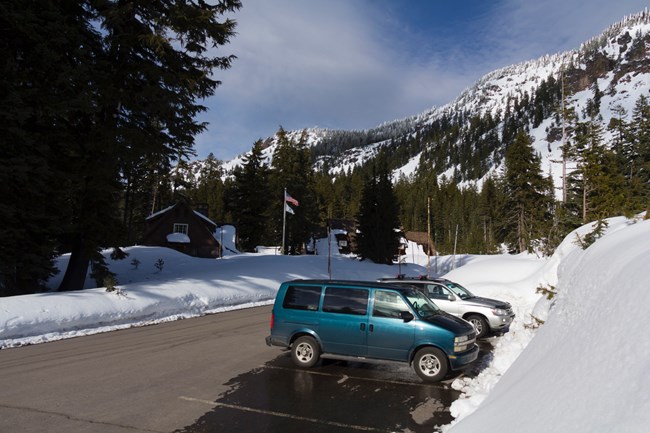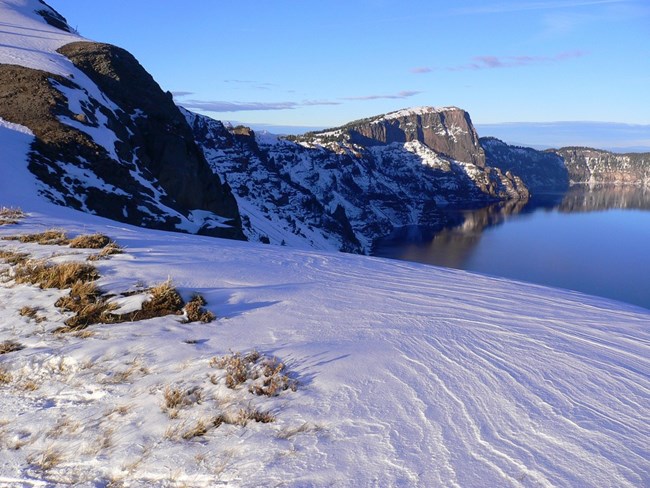|
Backcountry camping regulations are different in the winter months (November through May) than they are in the summer. When the Rim Drive is closed to automobiles, it becomes a trail for snowshoers and cross-country skiers. Camping along the rim is allowed with a valid permit. Snowshoers and skiers must travel at least 1 mile from the nearest plowed road in order to camp, and must camp at least 100 feet back from the edge of the caldera. Note: Park regulations prohibit the use of bicycles, including fat tire bikes, on winter trails.

Winter HazardsSnow Cornices Weather Trip IdeasWest Rim Drive 
Overnight ParkingIn the winter, backcountry campers are allowed to leave their vehicles only at Park Headquarters. Overnight parking at Rim Village is prohibited. Vehicles must be parked between the Visitor Center and Ranger Station, in the area shown in the photo. If you wish to access the West Rim Ski Route, you will need to ski or snowshoe one mile up the Raven Trail, from Park Headquarters to Rim Village. |
Last updated: October 2, 2022

